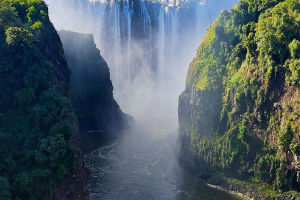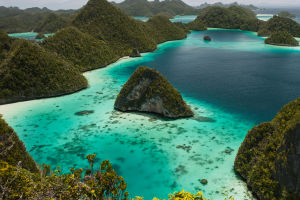Exploring the natural marvels of Madagascar offers Lykkers a unique chance to witness one of the most iconic landscapes on the planet. Among these, the famous Avenue of the Baobabs stands out as a remarkable spectacle.
This extraordinary row of giant trees captivates visitors with its ancient presence and fascinating adaptation to the environment.
This guide will help Lykkers understand what to expect, how to reach this enchanting site, what to see and do, as well as practical information about tickets, opening hours, and accommodation.
Where to Find the Avenue of the Baobabs
Location and Accessibility
The Avenue of the Baobabs is situated near the town of Morondava, on the western coast of Madagascar. It stretches for approximately 260 meters along a dusty red dirt road that cuts through a cluster of towering baobab trees. The closest major city is Morondava, which serves as the main gateway to the avenue.
How to Get There
Reaching the Avenue of the Baobabs involves a bumpy but scenic 20-kilometer drive from Morondava. Local transport options include hiring a 4x4 vehicle ($50–$100 for a half-day trip), taking a taxi-brousse, shared minibus ($2–$5 per person, one-way), or arranging a guided tour that includes transportation ($30–$80 per person).
Roads may be challenging especially during the rainy season, so it is advisable to plan accordingly.
What Makes the Baobabs So Special?
The Unique Appearance of Baobabs
These trees are instantly recognizable due to their massive trunks and irregular branches that resemble roots sticking up toward the sky, leading to the nickname “upside-down trees.” Their impressive size and solitary growth make them natural monuments in the landscape.
Survival Secrets
Baobabs have adapted remarkably well to dry and harsh environments. Their trunks are spongy and capable of storing large amounts of water—up to 300 liters per tree—allowing them to survive prolonged droughts. This incredible water storage system makes them resilient giants in the Menabe region.
Longevity and Cultural Significance
Most baobabs live for more than 500 years. For the local people of Menabe—a region named after its distinctive red soil—these trees are not only a symbol of the land but also a source of cultural appreciation.
What to See and Do at the Avenue of the Baobabs
Best Time to Visit
The ideal moment to experience the avenue is at sunset. The setting sun casts soft, warm light that creates dramatic silhouettes of the baobabs against colorful skies, perfect for photography and simply soaking in the beauty.
Seasonal Highlights
The baobabs bloom from February to March, marking the end of the wet season. This period offers an added attraction as visitors can witness the trees in flower, adding another dimension to their grandeur.
Exploration Tips
Walking along the avenue gives the chance to appreciate the scale and details of these ancient trees up close. Guided tours often include explanations of baobab ecology and local traditions linked to the trees.
Practical Information for Visitors
Entry and Ticket Costs
Access to the Avenue of the Baobabs is generally free, but parking usually costs $1–$2, guided tours range from $5–$10. It is advisable to confirm prices locally as they can vary.
Opening Hours
The avenue is an open natural site accessible any time. However, visiting during daylight and especially near sunset is recommended for safety and the best experience.
Accommodation Near the Avenue of the Baobabs
Morondava offers the closest lodging options to the avenue, ranging from budget guesthouses ($10–$25/night) to mid-range hotels ($30–$80/night). Accommodations provide a comfortable base to explore the baobabs and surrounding areas. Early booking is suggested, especially during peak travel seasons.
Environmental Challenges and Conservation Efforts
Threats to Baobabs
Expansion of agricultural activities, particularly rice and sugarcane cultivation, introduces excessive water into the soil, which negatively impacts baobab health. These changes threaten the survival of these natural giants.
Ecotourism and Future Prospects
Local initiatives aim to promote ecotourism as an alternative income source for residents, potentially aiding conservation. Though these plans are still developing, they represent hope for preserving this iconic landscape.
In Conclusion
The Avenue of the Baobabs stands as a striking example of nature’s resilience and beauty, offering Lykkers an unforgettable experience. From its impressive trees and dramatic sunsets to its rich cultural significance and environmental challenges, the avenue is a destination worthy of exploration.
Practical accessibility from Morondava, combined with affordable accommodation options, makes this natural wonder accessible to many. Planning a visit at the right time and understanding the local context will enhance the experience of this extraordinary landscape that has captured the imagination of visitors worldwide.


